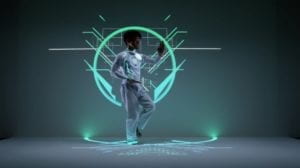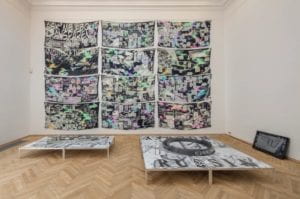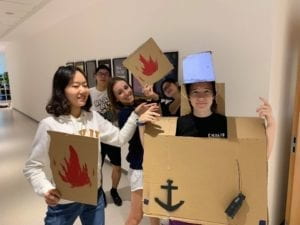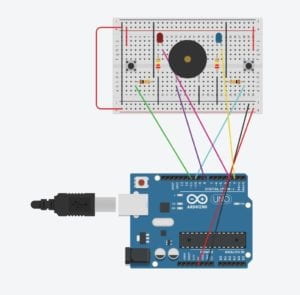I would define interaction as the exchange between human and computer in which both sides receive information from the other, process it, and then create a response, communicating in turn. This cycle can happen just once or multiple times.
This project is a perfect example of my definition of interaction. In it, motion-tracking technology is used to project graphics onto and around a dancer as they perform. The computer receives input from sensors placed across the performer’s body and then converts that information into an output–choreographed lights that enhance the art being created on the human side of the equation. In turn, the dancer is able to see the output produced by the computer, find it either visually pleasing or displeasing, and then experiment stylistically with their movements, again providing new input. In this way, the technology and the human are engaged in a sort of conversation to generate art, a high-level form of interaction.

On the other hand, while parts of this exhibit do utilize interaction, such as the Call-A-Spy installation, the majority do not. The video installation and the hanging scarves, in particular, are not examples of interactive projects, as they require no input from the audience and no communication between the audience and the technology. They consist of only observation, and while the audience may take in the content output through this exhibit, their responses do not, in turn, affect the exhibit.

In making our interactive device, my group wanted to address the issues brought on by climate change, many of which would be far more frequently-occurring and extreme by the year 2119. In order to cope with these possibly daily issues, it would be incredibly useful for someone to have a lightweight, portable, and wearable device that could offer built-in protections against some of the most common natural disasters–rising water levels, typhoons, higher temperatures, forest fires, pollution, and earthquakes. Given the expenses inflicted by climate change–relocation, property damage, personal health–and the lackluster international response, DisasterJacket is ideally a one-time cost that will offer many protections to consumers that are vulnerable to the changing environment.
We wanted to design the device with a variety of sensors that could actively engage with and respond to the environment around it, therefore serving as a sort of extension of the user in order to keep them safe. The DisasterJacket we presented ties back into my idea of interaction because it seamlessly facilitates communication between user and computer. For example, in the example involving high temperatures and forest fires, the device uses temperature sensors to gather input from both the environment and the user, then enables the use of a water hose and temperature control to keep the user cool and comfortable. The user can then engage with these tools by wielding the hose to put out the fires. This illustrates exactly my established definition of interaction. The same principles are also illustrated in the example involving the typhoon. The device gathers input from a wind sensor, processes it, then responds by dropping an anchor to prevent the user from being blown away. It also provides a helmet to guard against any flying debris.
The DisasterJacket is very user-friendly, working ahead of a person’s needs or concerns in order to provide a sense of safety and preparation for any disaster scenario.

While this DisasterJacket prototype is quite bulky, future models would be slimmed down to make the jacket easily wearable, foldable, packable, etc. to facilitate daily use.
Bibliography:
